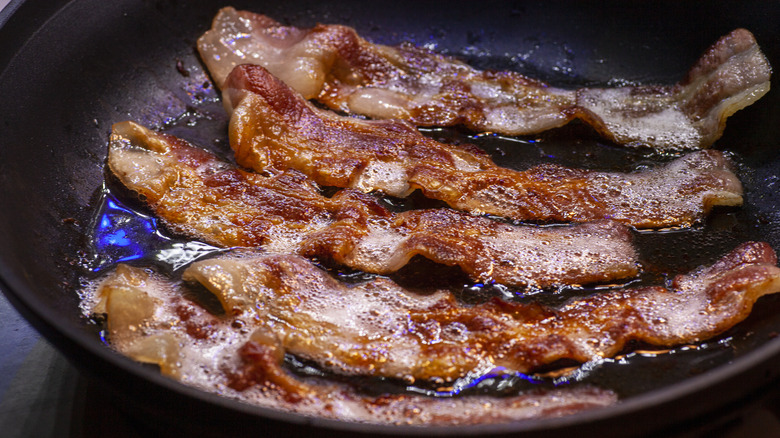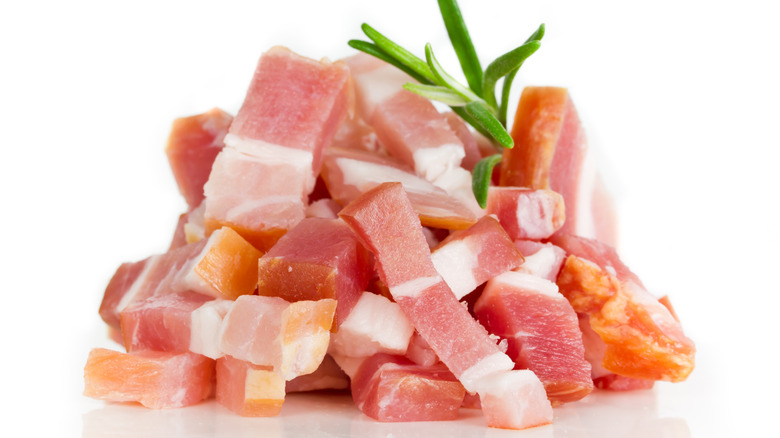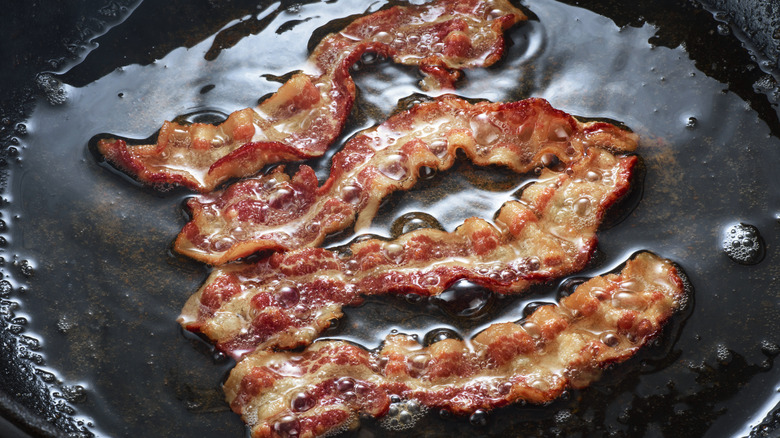Why Swapping Butter For Bacon Fat Makes For Better Morning Toast
Few ingredients match the power of bacon fat. From transforming caramelized onions to infusing umami flavors into pasta, this rendered byproduct gives any dish hints of meaty goodness. Since it has a texture similar to butter, real, chilled bacon fat works even better than the leftover grease that appears in your pan.
As with butter, spreadable bacon fat will melt into a clear, liquid grease when exposed to heat, making it perfect for the hot surface of a crunchy slice of toast. You also don't have to add salt since curing has already introduced sodium. While this can make it a little difficult to gauge exactly how salty your spread might be, it will likely not need additional salt to make its flavors pop. If you want to augment your toast's flavor even further, spread some bacon fat over both sides and toast it on a skillet. This will give your toast a nicer crust.
Render your bacon fat slowly
Excellent bacon fat takes more than just sizzling cured pork over a hot skillet. While most people are drawn to high heat when cooking bacon, not all of the fat will melt. Furthermore, you run the risk of burning, which could introduce bitter flavors into your render before you even have the chance to cool it to a butter-like consistency. Slow and steady wins the race when it comes to bacon fat, especially when you're using it for dishes such as buttered toast that will put its flavor on full display.
While crisping up bacon over low heat takes a little longer, you can expedite this process by chopping your strips into smaller bits — or use lardons instead, as they are essentially savory bacon bits. Use a cast iron pan that will hold heat evenly to avoid overcooking.
Remember to filter your bacon fat to get that smooth, buttery finish
If you want your bacon fat toast to truly shine, you'll want to strain out the rendered byproduct for a few reasons. Even if you've taken the time to render your bacon slowly, small bits of fried cured pork can come off and make their way into your spread. After you remove the bacon strips (or lardons) from the pan, filter out the unwanted bits with a fine-mesh strainer. You'll also want to store your uncooled rendered liquid in a heat-resistant container, as a weak plastic could easily result in harmful material seeping its way into your food.
Running your bacon fat through a sieve will also make your stash last way longer, as those unwanted bits will spoil faster than the rendered liquid. Putting it in the fridge should allow it to last for approximately a month. Just remember to let your bacon fat cool on the counter for no longer than two hours, as any more could encourage bacteria growth.



